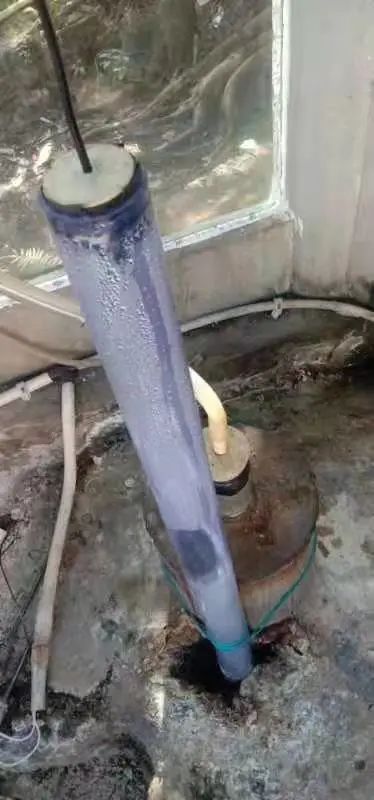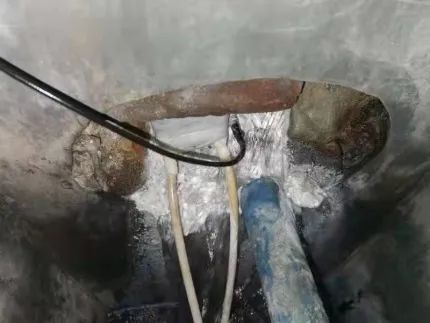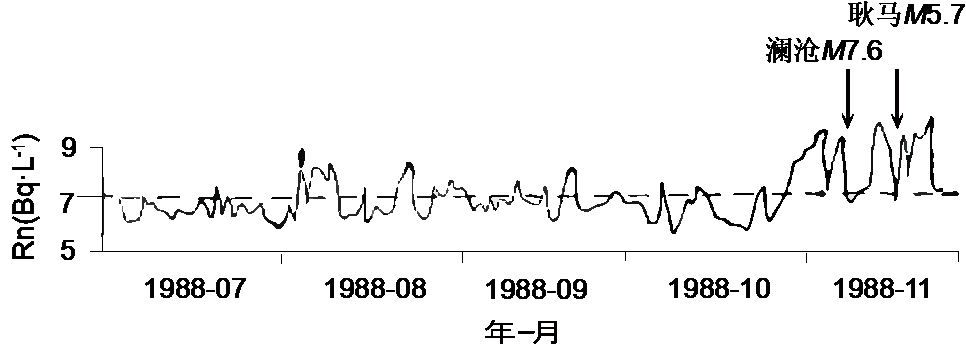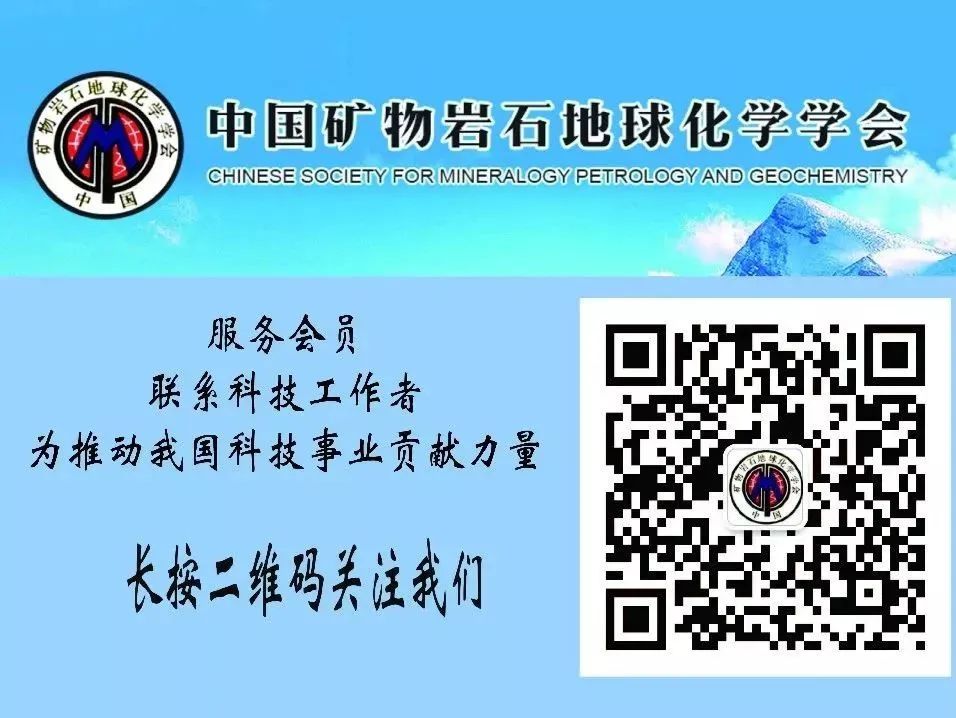Science Park Land | Spring Water Know the Earthquake
Author:Institute of Geological Earth Time:2022.06.14


"
Recently, the earthquake is frequent, and the people's life safety and property safety have suffered huge losses. We actively explore the method of earthquake prediction. Spring water is a natural display of groundwater. What are the depth of the earthquake, the spring water and the earthquake? Let's take a look together!
Spring water knows the earthquake
Zhou Rui, Li Ying*
(Institute of Earthquake Prediction, China Earthquake Administration, Beijing)
Can spring water perceive the earthquake?
Spring is a natural display of groundwater
Is the place where groundwater or underground water -containing layer is naturally revealed.
The groundwater of the intersection of the water -containing layer or a water -containing channel is surging out of the groundwater
Follow the fixed exit and continue to flow out,
It is called spring, and the groundwater flowing out is called spring water
According to different classification basis, the spring has different classifications. According to the nature of the water content of the supply spring, it can be divided into rising springs and falling springs; according to the reasons of the spring, it can be divided into erosion spring, contact spring, overflowing spring, fault spring, etc.; According to the temperature of the spring water, it can be divided into cold spring. , We Hot Spring, Hot Spring, Hot Spring, and Gao Hot Spring; depth of the underwater cycle in the basement can be divided into surface springs, shallow circulation springs and deep circular springs.
泉水含有一定量矿物质、微量元素和可溶性气体组分等,这些成分大多与地下水流经区的岩石矿物组成、岩浆活动、水、气体、生物等因素有关,通常情况下,泉水的化学成分、 Dynamics such as flow, water temperature, and pH are relatively stable within the range of natural fluctuations. Spring water, especially the mineral water formed after a long cycle of mineralization, is often used for medical and health care, and those who meet drinking water standards are often used as sources of drinking water. In addition to medical care and drinking functions, spring water is often used for seismic monitoring forecast and geoscience research.
In China, the Northeast edge of the Sichuan -Yunnan, the Qinghai -Tibet Plateau, the Zhongtian Mountains, the Lugu Fracture Belt and the neighbor areas, the northwest of Beijing, and the coast of Fujian are widely distributed in spring (Ma Yuchuan et al., 2015). Some of them belong to the fault spring and rising spring, and have a good space correlation with the broken structure. High school warm spring dense zone is often a strong zone of earthquake activities, but the strong earthquake area is not necessarily the high school warm spring dense. The water temperature is greater than 25 ° C, and most of its spring water comes from deep underground parts, not shallow groundwater systems. The formation of hot springs is related to the deep cycle of groundwater. Therefore, most of the springs used for seismic monitoring and forecasts are also hot springs, hot springs, and high hot springs.
Earthquake is a phenomenon that the huge energy that has been accumulated in the earth for a long time from a limited area and caused earth vibration from a limited area.
The process of earthquake waves may cause the local region of the underground water layer to deform, affect the penetration of the crust medium, and then change the underground water flow process or flow rate, resulting in changes in spring water temperature, flow, and hydraulic chemical components.
The gaseous, water temperature and flow in the hot spring water have the same earthquake response to the earthquake. For example, there is a change in the same earthquake in the hot spring water in Longling Banglang in Longling in Yunnan Province. This phenomenon shows that there is a certain connection between hot spring water and earthquake activities. Spring water can be used as one of the means of underground fluid observation of the earthquake.
Its mechanism can be explained through cold water seepage: Under the action of geographical stress, the water -containing layer deforms and the pore pressure in the water content layer changes, causing the water flow change in the spring eyes and the water content system, which causes water temperature, water and hydraulic chemical components Variety. The far -field earthquake caused the cracks of rocks, increased the pores, and the water in the cracks had short -term and short distance transportation, mixed with the water in the water content, and changed the nature of the original spring water. Once the stored crack water is insufficient, the amount of water penetration is gradually decreased, and the chemical composition of the water in the water in the water -containing layer gradually restored to the original ingredient. The mixing of the upper layer of cold water will reduce the fault springs from the underground water temperature of the deep cycle.
Earthquakes will cause hydrological changes such as groundwater levels, water temperature, flow, and hydraulic chemical components. The mechanism of this process can be explained through static stress change models and dynamic stress changes: one is that the order of organ sliding is small and lasting lasting lasting The static stress change, the other is a large and short dynamic stress change caused by seismic wave transmission.
The static stress changes caused by sliding at the break level will increase faster with the distance. It is only applicable to explain the near -field change within a rupture length of the earthquake, that is, the ground distance of the ground from the earthquake is less than the fault rupture length caused by the earthquake. (scope). Like the changing level of the seismic water level, the compression or expansion of the water -containing layer can be explained by the water level. The changes in midfielder and Yuanchang (more than 1,000 kilometers) can only be explained through dynamic stress changes. The clearance of the creeping particles and the increase of the osmotic rate is the main reason for changes in midfields and distant water.
Earthquake waves can cause an increase in infiltration rates such as underground media such as rocks and fluids, and the penetration rate after the earthquake is quickly recovered. Hydrogenochemical research also proves that the accumulation of stress before the earthquake can also open or close the microcontroller, thereby changing the penetration rate of the water -containing layer. The increased stress before the earthquake makes the cracks open to form a channel. The deep gas of the earth will rise quickly along this channel, and it will overflow the surface with the spring water. This process has been verified by the rock high -pressure physical simulation experiment.
Therefore, by monitoring the changes in the specific indicators of spring water, it is possible to capture the precursor abnormalities of underground fluid caused by earthquakes -the spring water to know the earthquake, not only the earthquake "knows" (observation) at the same time (observation). (predict). The idea of spring water seismic monitoring forecast
According to the differences in the cause, characteristics and characteristics in the practice of earthquake forecasting, the precursor of earthquakes is divided into source, signs, and farming.
Yuanzhao refers to various abnormal information that occurs in the emergence of the source area (earthquake zone and neighboring areas) during the formation or evolution of the earthquake, and the scope of emergence is often related to the seismic earthquake level.
The sign of the field refers to the precursor of earthquakes that appear outside the earthquake area in the area of the regional stress field. These abnormalities usually appear on the sensitive points of places or regional stress field structures in the structure of the shock source area.
Signs refer to the abnormalities of strong earthquakes that occur outside a land structure. Earthquake prediction research by monitoring the hydrological changes of spring water (hot springs) is more useful (vehicle Taihe fish gold, 1997).
Researchers investigate the background values of a specific indicator of hot springs on the fracture zone of the activity, especially the fracture zone with high earthquake risk risk, to obtain the hot springs distributed along the fracture belt distributed along the fracture belt with high earthquakes. Observe the normal fluctuation range of the indicator. When the indicator changes significantly or is separated from the normal fluctuation range (or inter -annual change), it is deemed to be an abnormality of the indicator. When abnormalities appear, it is necessary to determine whether the abnormality is related to the structural factors, or it is related to other natural factors such as meteorological and tide factors, or it is related to human activities. For example, water pumping operations may cause abnormal spring water. When monitoring at the purpose of earthquake prediction, non -structural abnormalities should be excluded.
Index of spring water seismic monitoring forecast
In order to find spring water indicators with earthquake prediction significance, it usually uses the hot spring observation data before and after a certain earthquake for retrospective analysis. Select the fluid component that may come from the deep part of the crust, or the earthquake that may reflect the indicators of the deep situation. After the interference factor of the structure, then determine whether the indicator has the meaning of earthquake precursor indication, and what is the relationship between precursor abnormalities and earthquakes in time. Through research, the hot spring monitoring items and indicators that can be used for earthquake prediction research. Choosing a hot spring observation indicator with earthquake prediction is one of the prerequisites for using hot springs for seismic monitoring and forecasting.
At present, the indicators of hot spring observations mainly include the temperature, flow of spring water, and the hydraulic components of the spring water and the hot spring gas components. Among them, the use of hydrochemical comprehensive observations carried out by hot springs plays an important role in earthquake prediction research. In addition, the microorganisms in the hot springs can also perceive the changes in the living environment and change under environmental coercion. This may also be a means of groundwater monitoring and earthquake prediction (Du Jianguo et al.. 2018; Li Ying et al., 2021).
China's spring water seismic monitoring forecast
Chinese hot spring water temperature observation has a long history, such as the Lixiang Maozhang Hot Spring (Figure 1) in Sichuan (Figure 1) and the Bangla Palm of Longling in Longling in Yunnan (Figure 2). According to research, Litang Maoyu Hot Spring is an abnormal sensitive spring in the western Sichuan area. Since its own records, its water temperature has occurred obviously before many strong earthquakes -mainly rising — falling — earthquakes and sudden rise. - Continuous — The abnormalities of the seismic are mainly, and the abnormal decline can also correspond to the earthquake, but the effect of the shock is obviously not as significant as rising.
Figure 1 Sichuan Litang Maoji Hot Spring

Figure 2 Yunnan Longling State Palm Hot Spring

In addition to the water temperature, the water flow observation of the hot spring also has a long history in China. For example, in 1985, the Spring Water flow observation of the No. 10 Spring of Urumqi (Figure 3). The precursor of the earthquake at the 10th spring of Urumqi is basically positive and has good repetitiveness. After the spring water flow rises or increases from the background value trend, it will decrease or fall through the trend. Earthquake often occurs during the process of flow from high (high small Qiqi, 2001A). It can be seen that Urumqi's 10th spring traffic is sensitive to shock.
Figure 3 table 10 Urumqi

Today, one of the most active areas of earthquake monitoring and predicts using spring water observations is the precursors of hydrochemical earthquakes of hot springs. There are dozens of types of water global chemical observation projects in hot springs, including the constant components of spring water, trace components, gas components, isotope components, and so on. There are many tests of hot spring water chemistry, which provides new possibilities for exploring new types of earthquake sensitivity observation indicators. At the same time, it also builds a hydrochemical (gas) global chemical model for the system to build a multi -earthquake area or construct a complex area. Provides theoretical support. Exploring the deep information contained in the groundwater chemical components, obtaining components that are sensitive to the earthquake and sensitivity to the earthquake, are an important direction for future hot spring hydrochemical research.
Observation of hydration of hot springs
Compared with the observation of temperature and flow, the observation of the hydration components of hot springs is more complicated, and the analysis and testing need to be performed, and the test cycle is relatively long and the analysis costs are high. Many continuous observations of test items are also difficult. Among them, the more mature is the monitoring and research of hot spring water.
China has a history of hot spring water earlier and more common. For example, Kagangzuku Hot Spring in Xiagangtang Shipu, Yunnan has begun to observe water in 1970. The precursor of water in Shimonatto's hot spring is basically high -value abnormalities. The reason is that the concentration of the north plate and the south plate of the north plate and the south plate are higher than the hot springs. The cold streams next to the hot spring are invaded by the surface cracks. The hybrid ratio of the hot spring water is relatively constant. When the Pangyan layer has changed, the groundwater balance is destroyed, the mixed ratio changes, and the hot spring water ravioli occurs (Hong Yunliang, 1990). The ion concentration of hot spring water is abnormal, such as CL-ion concentration, SO42-ion concentration, NA+ion concentration, etc., which also has certain earthquake prediction significance.
The abnormal concentration of hot spring water ions may be related to the impact of difference stress on water rock reactions. Under stress under the action of stress, there is a change in deformation and micro -structured rock under the action of stress, promoting mineral dissolution and precipitation and ion exchange reactions, and the release of closed fluids, resulting in the ion concentration Explosion abnormality.
The water content of different types of rocks, the sensitive components of the precursor monitoring of earthquake hydration are also different; therefore, using the concentration of groundwater constant components for monitoring, the sensitivity of its indicators may have regional differences. In the trace element components of the spring water, most of the elements of B, F, LI, and SR come from deep -circulating underground hot water. Its high -value zone is controlled by the ground stress field, underground fluid and fracture control. It is worthy of attention to the sensitive components of the hot spring water, and CH4 also has sensitivity. For example, from 1983 to 2001, the F-ion concentration abnormal abnormality appeared many times from 1983 to 2001, and the background value — pulse suddenly-the highest value — resurrection-resume to the background value. A few days or dozens of days after restoring the background value, only individual earthquakes occurred when the F-ion concentration reached the highest value (Gao Xiaoqi et al., 2002). In addition, hot spring water and mercury also have good sensitivity to Ying Zhen, such as Beijing Yanqing Songshan Spring and Tongwei Hot Spring in Gansu.
The gas chemical components of spring water are also the focus of the hot spring earthquake monitoring, including N2, CO2, AR, CH4, HE, H2, etc. The fault is a channel where the gas moves from the deep part of the earth to the atmosphere. The gas release mechanism related to the earthquake activity can explain the increase in jet efficiency caused by the acceleration of rock acceleration under the action of stress. H2 and HE are components that reflect the more sensitive changes in crustal stress. They are light quality, small viscosity, diffusion and penetration coefficients, have strong migration capabilities, and have strong reflection sensitivity. For example, the dissolved gas CH4 in the spring water at 10 at Urumqi is basically positive before the earthquake. Generally, when the CH4 content changes from high value to low (high small Qiqi, 2001B). The isotopatin ratio of hot spring gas is also an indicator of precursor significance. For example, the ratio of 3HE/4HE and the composition of carbon isotopes of carbon dioxide gas can not only show the source of the hot spring gas, but also obtain the ratio of the source and shell sources. The exchange of source substances changes.
The monitoring of hot spring water chemical components and gases not only rely on solid theory and experimental foundation, but also depends on the continuous innovation of observation technology. It is necessary to gradually realize online continuous observation, gradually reduce the cost of observation, and enhance the timeliness of observation.
In addition, in recent years, the precursor of the earthquake of spring water microorganisms has gradually entered people's attention. Biological indicators are emerging observations, and the survival of microorganisms in the spring water environment depends on the physical and chemical conditions unique to spring water. For example, there is a significant positive correlation with H2S, CH4, and F-hydrochemical indicators, and is jointly affected by H2S, CH4, and F-hydrological and geochemical indicators (Zhang Qiang et al., 2012a; Zhang Qiang et al. 2012B) Essence The pre -seismic and mechanism research of spring water microorganisms provides more possibilities for the spring water earthquake observation.
The complexity of the spring water seismic forecast
As an important object of earthquake monitoring and forecasting, spring water may carry deep structural activity information, which is an important short -term prediction method, and sometimes it can also show mid -term abnormalities (Kong Lingchang et al., 2012). However, at present, scientific researchers have not found the corresponding relationship between the hydrochemical indicators of spring water, a one -to -one correspondence between the occurrence of microorganisms and the occurrence of earthquakes. Observe the hydrogeological structure of the spring point include the strong function area of the spring water supply area, the water and rocks, the excretion channel, and the exposed spring point.
Earthquake breeding information of spring water is mainly formed in a strong area flowing through water and rocks.
In the early stage of pregnancy, rocks or rock formations were in a relatively stable stress accumulation state. If the groundwater is stored for a long time, it is difficult to show that the trend generated by the spring point is extremely difficult to show; if the time is short, due to the slow response of water and rocks, it is difficult to produce an abnormal trend.
At the stage of the earthquake, the degree of rupture of rocks and pressure -soluble effects have been strengthened, and the role of water rocks has also been strengthened. There are some spring points with longer groundwater storage time. For this kind of springs, the abnormalities of Lin Zhen are mainly the performance of the chemical environment and stress field at the end of the groundwater channel. 2001). Some cold springs with smaller groundwater in the groundwater can produce abnormalities in the earthquake due to the strengthening of pregnancy in the seismic stage. Sudden jump (Figure 4) (Guan Zhijun, 2006). Figure 4 Sichuan Aunt Spring Water Daily Daily Temperature Term (Guan Zhijun, 2006)
Some cold springs and low-temperature hot springs with moderate groundwater can show a relatively complete abnormal form before the strong earthquake in the middle, such as the abnormalities of the water and mercury abnormalities in Beijing Yanqing Songshan Spring before the magnitude 6.1 earthquake in 1989 (Figure 5) (Zhang Zhaocheng, etc. (Zhang Zhaocheng, etc. 2000). This type of spring is more sensitive to the changes in the underground environment and can also reflect the abnormalities in the channel.
Figure 5 Beijing Yanqing Songshan Spring Waterman content changes curve (Zhang Zhaocheng et al., 2000)

The hot spring of the groundwater appears abnormally before the earthquake, and the form is diverse. The short -term abnormalities are mainly formed by the end of the channel. Most hot springs are located in a strong area for new structural activities. The effect of gestational shocks can often destroy the closure of the channel and cause the diversity of abnormal forms. For example, there was a sudden jump before the 1988 Lancang magnitude 7.6 earthquake (Figure 6) (Figure 6) (Figure 6) (Figure 6) (Yin Xiuru, 1992).
Figure 6 The daily average curve of the hot spring water in the Yunnan Showuan Hot Spring Water (Yin Xiuru, 1992)

In fact, it is precisely because of the hydrogeological conditions of the spring point, different structural sites, and different rock properties, which causes the springs to reflect the shock. Some springs do not have abnormalities before the earthquake, and the abnormal expression of the springs with precursor abnormalities is likely to be different. For example, in 1996, the 7.0 magnitude earthquake in Lijiang, Yunnan in 1996, was not observed that there was an abnormal trend and short -term abnormal phenomenon in Ganzequan, which was not observed in the epicenter area (Luo Zhuoli and Wang Weijun, 2008). Therefore, it is unreliable to simply perform the earthquake forecast according to the abnormalities of a spring point.
During the breeding process of the great earthquake, different disciplines (such as geomagnetic, geomagnetic, deformation, etc.) of different stations (locations) show the trend of time rhythm and space in an orderly manner; They are all uneven. Sudden abnormalities in the seizure are began to be relatively calm, and only when they are in the earthquake. Taking spring water as an observation object, it is necessary to study the precursor of the earthquake from the unity of time and spatial structure, and to grasp the complexity of the earthquake precursor as a whole. Correctly understanding the complexity of the precursor is the key to earthquake forecasting (Luo Zhuoli and Wang Weijun, 2008).

Therefore, in the analysis and identification of the precursor abnormalities of the spring water earthquake, the relationship between a single test and multi -test abnormalities must be paid to the relationship between the spring point, the relationship between the single spring point and the multi -springs, The relationship between abnormalities and other disciplines (Wang Guangcai and Shen Zhaoli, 1997).
The spring water is dingling, and the trickle contains a hint of sounds from the deep earth; through it, people may be able to perceive the weak information from the shock before the collapse of Shanzuki. The charm of the Research on the Saber of Hot Spring Earthquake is to unveil the mystery of the mysterious springs and interpret the "warning" signal of the earthquake depth of the earth shell. Although it is not yet possible to accurately predict the earthquake, with the continuous progress of science and technology, the monitoring methods of the spring water earthquake precursors will continue to be enriched, and the understanding of regional hydrochemistry will also be deepened. It will also play an increasingly important role.
This article has been published in the "Mineral Rock Gelated Geophysical Report" in 2022.
references:
Swipe up and read
The car is too much, fish gold. 1997. The source of the underground fluid, the signs, the signs and its significance in the earthquake forecast. Earthquake, 17 (3): 283-289
Du Jianguo, Li Ying, Cui Yueju, Sun Fengxia. 2018. Earthquake fluid Earth Chemistry. Beijing: Earthquake Press, 201-233
Hong Yunliang. 1990. Hydrous chemical characteristics of Shimantangzipu Hot Spring. Earthquake research, 13 (2): 189-195
Guanzhi Jun. 2006. Sichuan water tincture tested value jump abnormality and earthquake. Sichuan earthquake, (4): 32-36
Gao Xiaoqi, Xu Qiulong, Li Yanping, Li Xinyong, Zhang Xuemin, Cui Yong. 2001A. The shock analysis of the fountain flow of No. 10 Urumqi. Earthquake research, 24 (3): 233-237
Gao Xiaoqi, Li Xinyong, Xu Qiulong, Li Yanping, Zhang Xuemin, Cui Yong. 2001B. Urumqi 10th spring groundwater to dissolve the shock of gas methane. South China Earthquake, 21 (1): 14-18
Gao Xiaoqi, Dilixia, Xu Qiulong, Li Yanping, Feng Xiaohui, Cui Yong. 2002. The study of the characteristics of the Quan F-Yingxia characteristics of Urumqi 10, Earthquake, 22 (1): 5-11: 5-11
Kong Lingchang, Ye Qing, Fan Chunyan. 2012. The analysis of underground fluid abnormal phenomena of freshwater rivers before the earthquake of Wenchuan and Qinghai Yushu in Sichuan. , Su Shujuan, Zheng Chenhe, Liu Zhaofei, Lu Chang, Zhao Ying, Liu Jie, He Hongyi, Sun Fengxia, Xu Chaowen, Zhou Xiaocheng, Du Jianguo, Xu Sheng, Zheng Guodong. Report, Doi: 10.1360/TB-2021-0955
Luo Zhuoli, Wang Weijun. 2008. The complexity of the earthquake and the discussion of the problems of earthquake forecasting, early warning, and comprehensive decision -making -experience lessons of large earthquakes such as Tangshan, Haicheng, Songpan, Lijiang, earthquake. Earthquake, 28 (1): 19 -32
Ma Yuchuan, Huang Fuqiong, Xue Yan, Wang Bo. 2015. The preliminary statistics of long-term observation data of spring water and well water temperature. Earthquake defense technology, 10 (2): 367-377
Pan Shuxin, Gao Antai. 2001. The relationship between the age of the groundwater and the spring shock and the preliminary discussion of its application in the earthquake forecast.
Wang Guangcai, Shen Zhaoli. 1997. Earthquake groundwater dynamic monitoring and earthquake prediction. Natural magazine, 32 (2): 90-93
Yin Xiuru. 1992. Lancang 7.6 magnitude earthquake abnormal. Earthquake, 12 (4): 32-36
Zhang Qiang, Li Shan, Zeng Jun, Gao Xiaoqi, Yang Xiaofang, Lou Kai. Lou Kai 2012a. Urumqi 10 Spring Water Body Bacterial Foundation and the initial analysis of the response mode. Xinjiang Agricultural Science, 49 (3): 496-501
Zhang Qiang, Zeng Jun, Lou Kai, Li Shan, Yang Xiaofang, Wu Zunfeng, Gao Xiaoqi. 2012b. Urumqi 10th spring water body bacterial community response to earthquakes. Journal of earthquakes, 34 (5): 706-715
Zhang Zhaocheng, Zheng Dalin, Xu Jinghua. 2000. China Earthquake (1989-1991). Beijing: Earthquake Press, 87-131


- END -
Ledong County Meteorological Observatory lifted the thunderstorm and windy yellow warning [Class III
At 13:42 on June 08, 2022, the Ledong County Meteorological Observatory lifted Ledong County Thunderstorm and Yellow Early Warning signal.
Jiangsu Province released the second batch of red place names, Zhenjiang 6 was selected
(Zhang Pengyun) The former residence, Yongmaoyu, Hejia Village ... Recently, the second batch of 100 red place names in Jiangsu Province was officially released to the society, and the six red place n